These seven highly effective functional strength and conditioning exercises not only challenge the body in new ways and can help break through fitness plateaus, they can also improve overall quality of life by making daily activities easier to perform. Consider adding one or more of these exercises to your clients’ programs.
Turkish Get-up
Before squat racks and the bench press, the Turkish get-up (TGU) was a popular and recognized test of strength among athletes. The TGU is arguably the largest determinant of functional full-body strength, stability and mobility that exists in the strength and conditioning world. This exercise challenges single-leg hip stability, closed- and open-chain shoulder stability, shoulder mobility, core strength, spinal mobility, lower-body strength and mobility in various positions.
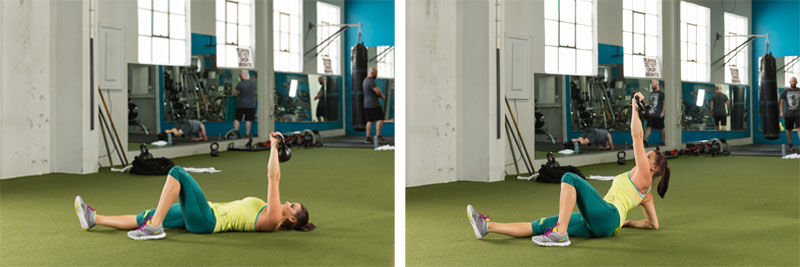

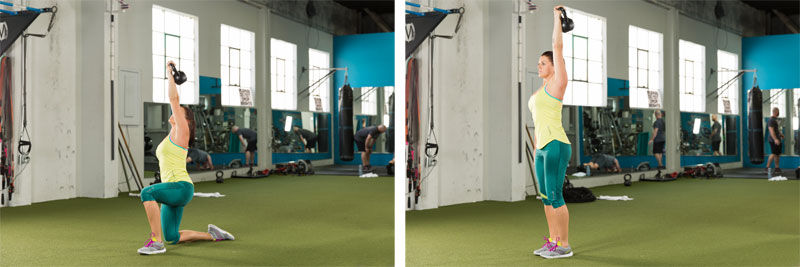
- Lie on your back and place the kettlebell into a straight-arm position. Keep your eyes on the bell.
- Bend the leg on the same side as the kettlebell and position the opposing arm on the floor at 45 degrees from the body.
- Grasp the handle as you sit up along the line of your arm, first to elbow and then to hand. Keep the kettlebell arm down, packing the shoulder joint and keeping the opposite shoulder away from the ear.
- Push from the heel of the bent leg and drive your hips in the air and into full hip extension. There should be a straight line from the kettlebell to the bottom hand.
- Sweep the straight leg back under the body and through to a lunge position.
- Take the hand off the floor and straighten the body; look forward.
- Drive through the front heel and stand. Steady yourself and then reverse the movement.
Nordic Hamstring Curl
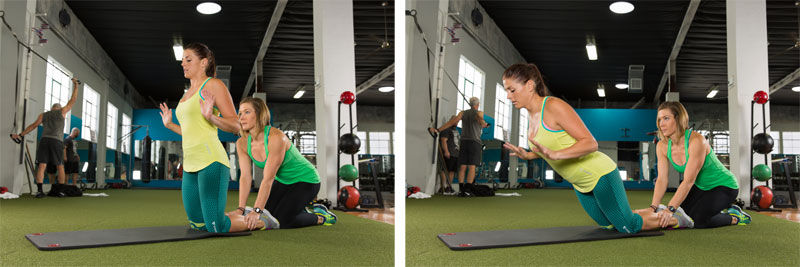
The Nordic hamstring curl has been a staple among athletes for years because of its ability to eccentrically load the hamstrings; developing high levels of eccentric hamstring strength is an important component to injury prevention while engaging in sport-specific movements. The Nordic hamstring curl is superior in developing eccentric strength and core stability, and activating the hamstring during knee flexion.
- Have a trainer or partner hold your ankles while you brace your core.
- Take a deep breath, extend the knee and lower yourself as slowly as possible to the ground. Your body should be straight and tight during the descent.
- Avoid flexing your spine.
- Once you reach the ground, press yourself up to the starting position and repeat.
Zercher Squat
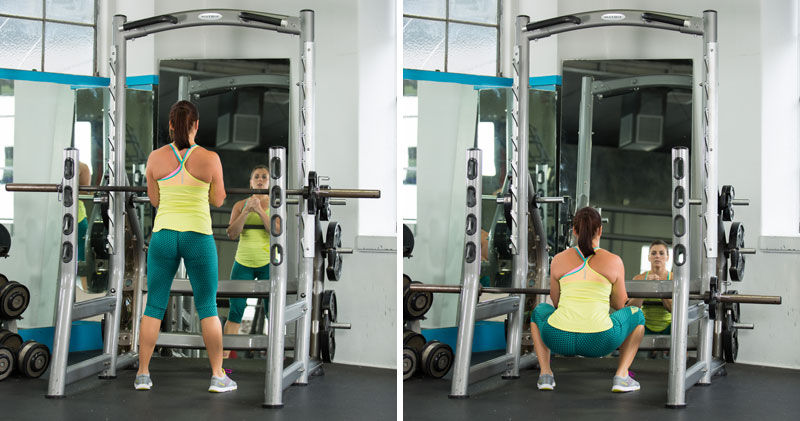
Ed Zercher created the Zercher squat in the early 1900s. This variation is a great exercise for reinforcing squatting mechanics as it forces a more upright posture then the back squat, which results in posterior-chain activation that emphasizes the hamstrings and glutes. The positioning of the bar translates to a more functional exercise for the performance of sports and real-world activities, particularly those required by fire fighters, construction workers and many other physical/labor-intensive occupations.
- Place forearms under and in front of a barbell with elbows shoulder-width apart from a squat rack.
- Cross the wrists and pull the bar in close against the body. Lift the barbell from the rack.
- Squat down with feet hip-width apart, keeping the back straight, the hands close to body and the knees pointed straight ahead.
- Descend through a full range of motion. Extend the knees and hips until the legs are straight. Return and repeat.
Sled Push
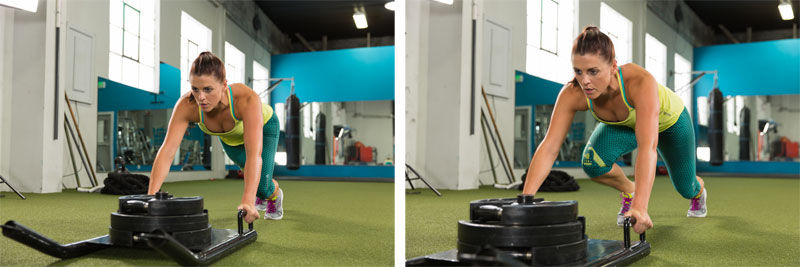
The sled push is a sport-specific tools used for the overall improvement of lower-body power and cardiovascular conditioning. Pushing a heavy sled is a single-leg, hip-extension movement that mimics the acceleration position for sprinting. It targets the quadriceps, glutes and entire posterior chain.
- Load your sled with the appropriate weight.
- Take an athletic sprint position and lean forward into the sled with your arms fully extended. Grip the handles and drive through the balls of your feet to push the sled forward. Focus on keeping your back straight and on extending your hips and knees to engage the posterior chain.
Farmer’s Walk
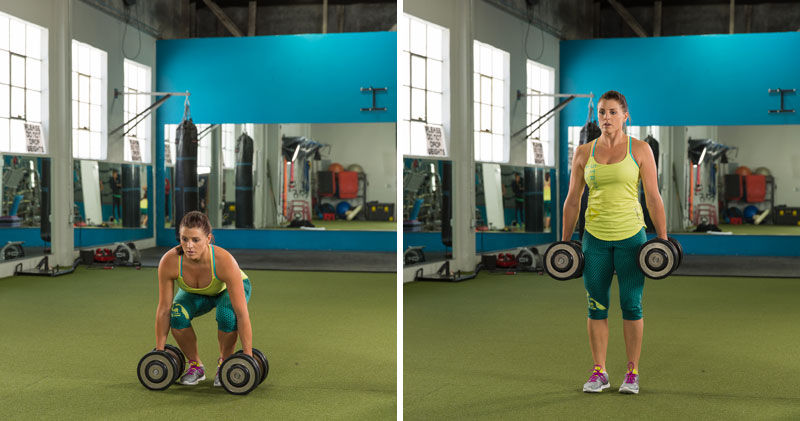
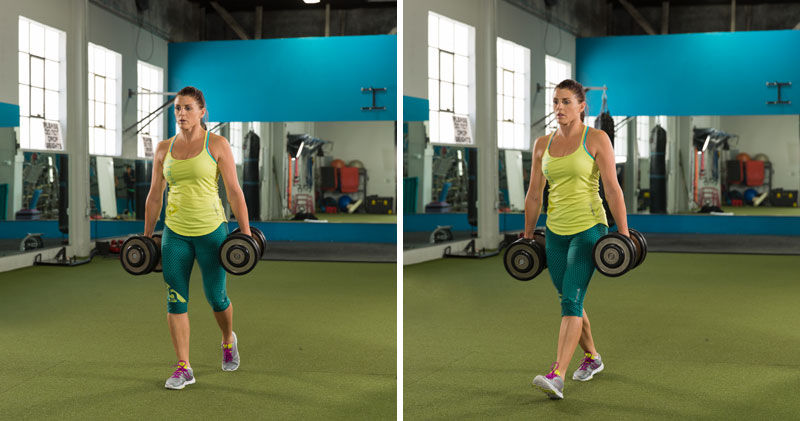
One of the simplest yet functional and effective exercises is the farmer’s walk. This exercise develops strength and power from the ground up, through the legs, hips, grip, core and back.
- Stand between two weights, such as barbells, dumbbells, kettlebells or other handled equipment.
- Grip the handles and deadlift the weights by driving through your heels. Keep your back straight, shoulders back and head up as you drive your hips forward.
- Take short, quick steps and don't forget to breathe. Walk as fast as possible for a given distance, typically 50 to 100 feet.
Single-arm Kettlebell Push Press
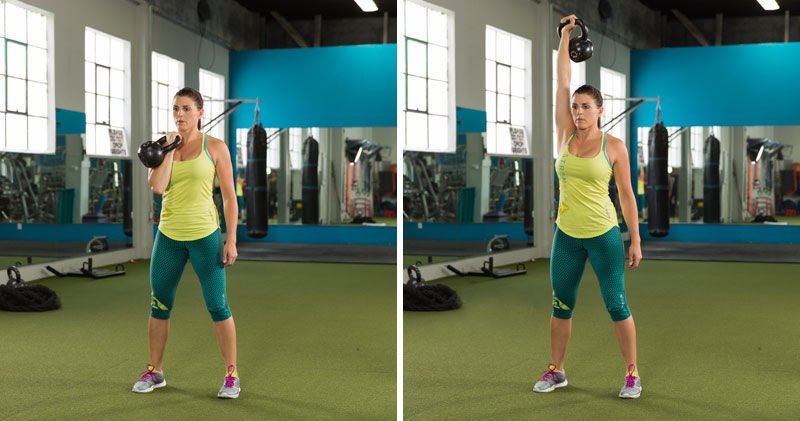
Overhead pressing has been a staple of strength-training programs throughout time. The kettlebell press adds a difficult challenge because the kettlebell is asymmetrical, which creates much more activation from stabilizing musculature. The single-arm push press challenges the body from head to toe and requires a significant amount of core activation due to the unilateral nature of the exercise.
- Hold a kettlebell by the handle in a rack position; keep your elbow tight at your side.
- Dip your body by flexing the hips and knees slightly, while keeping your torso upright.
- Immediately extend at the hips, knees and ankles, driving through the heels as if you were jumping to create momentum.
- Press the kettlebell overhead to lockout by extending the arms, using your body’s momentum to move the weight.
- Control the weight back to the starting position to perform the next repetition.




 by
by 











 by
by